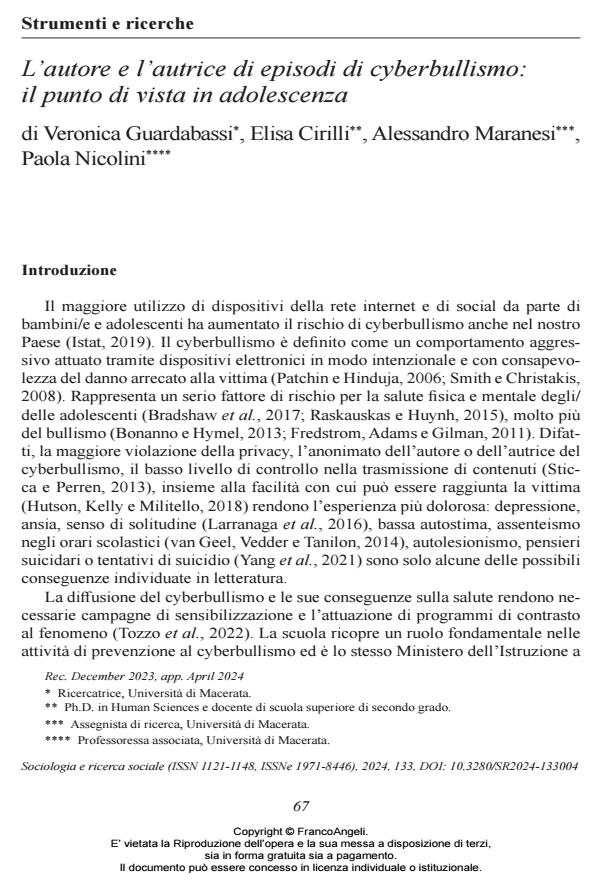L’autore e l’autrice di episodi di cyberbullismo: il punto di vista in adolescenza
Titolo Rivista SOCIOLOGIA E RICERCA SOCIALE
Autori/Curatori Veronica Guardabassi, Elisa Cirilli, Alessandro Maranesi, Paola Nicolini
Anno di pubblicazione 2024 Fascicolo 2024/133
Lingua Italiano Numero pagine 23 P. 67-89 Dimensione file 262 KB
DOI 10.3280/SR2024-133004
Il DOI è il codice a barre della proprietà intellettuale: per saperne di più
clicca qui
Qui sotto puoi vedere in anteprima la prima pagina di questo articolo.
Se questo articolo ti interessa, lo puoi acquistare (e scaricare in formato pdf) seguendo le facili indicazioni per acquistare il download credit. Acquista Download Credits per scaricare questo Articolo in formato PDF

FrancoAngeli è membro della Publishers International Linking Association, Inc (PILA)associazione indipendente e non profit per facilitare (attraverso i servizi tecnologici implementati da CrossRef.org) l’accesso degli studiosi ai contenuti digitali nelle pubblicazioni professionali e scientifiche
The spread of cyberbullying and the importance of involving students in reflecting on possible solutions to the problem have led to the implementation of an action-re- search project aimed at understanding adolescents’ perspectives on the identity of the cyberbullying perpetrator. To this end, 601 secondary school students responded to a questionnaire designed to identify the interests, friendships, behaviours, speech patterns, fears, and amusements of the male and female cyberbully. The collected data allowed for the identification of a shared representation and reflection on their differ- ences. Theoretical implications and practical applications are discussed.
Veronica Guardabassi, Elisa Cirilli, Alessandro Maranesi, Paola Nicolini, L’autore e l’autrice di episodi di cyberbullismo: il punto di vista in adolescenza in "SOCIOLOGIA E RICERCA SOCIALE " 133/2024, pp 67-89, DOI: 10.3280/SR2024-133004